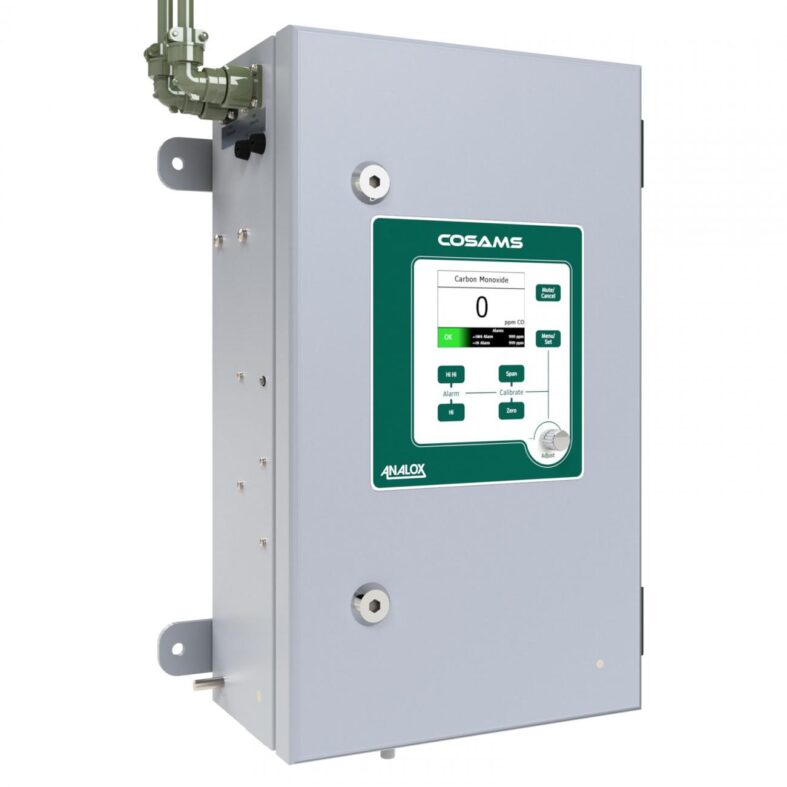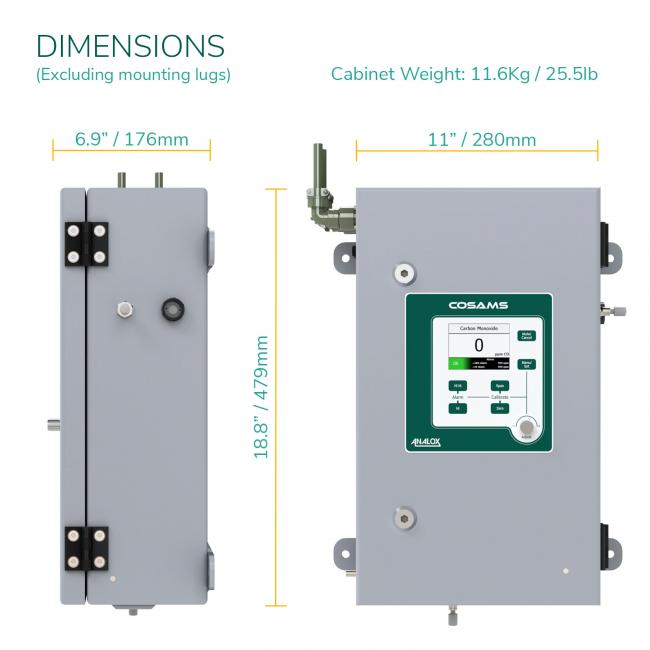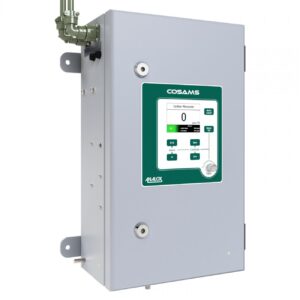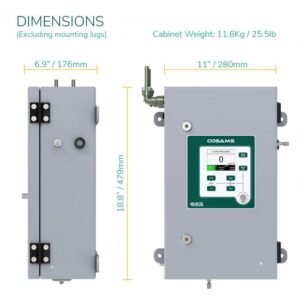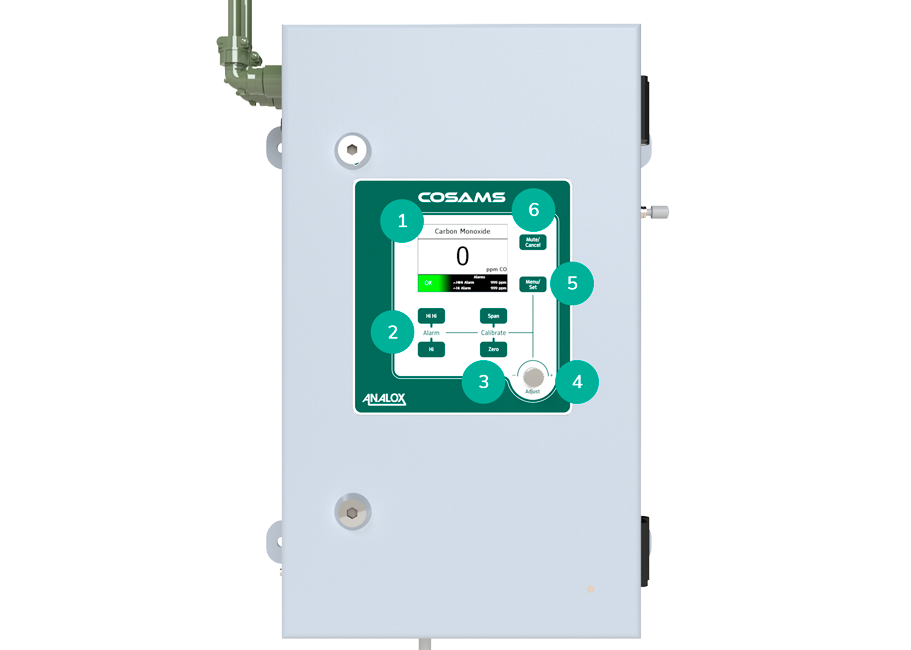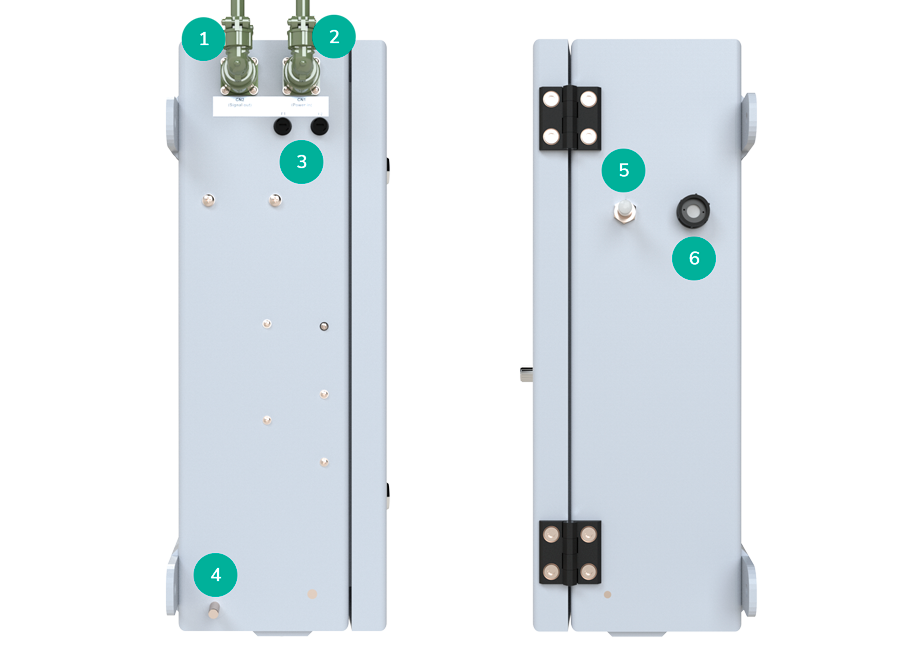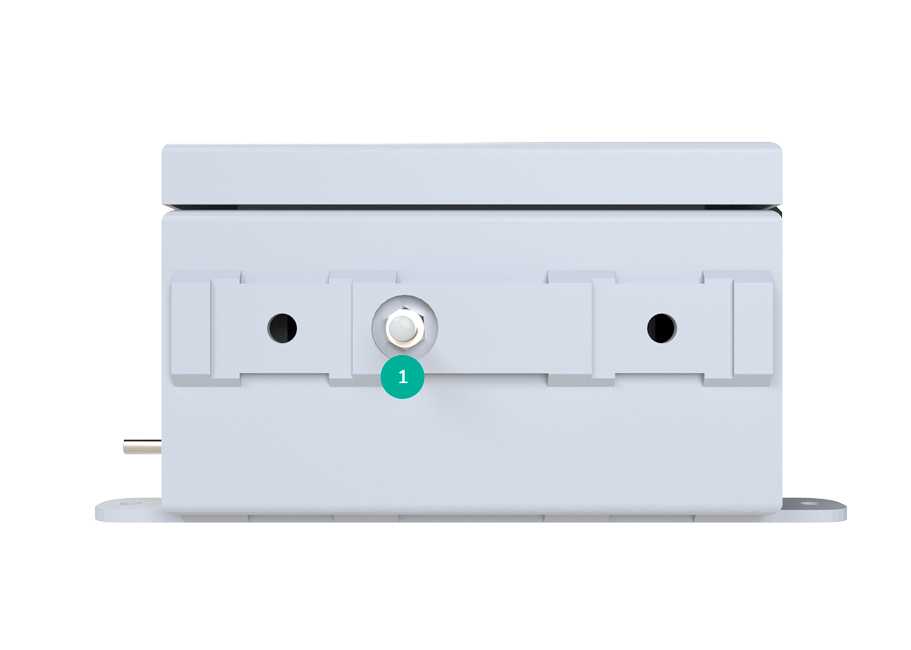COSAMS
CARBON MONOXIDE ATMOSPHERE MONITORING SYSTEM
Keeping submariners safe from CO poisoning.
Key Features
- Uses a GFC infra-red sensing technique ensuring the system is not sensitive to hydrogen or water vapor
- Built-in auto-zero function ensures sensor stability
- Real-time monitoring ensures rapid response to carbon monoxide (CO) issues as they occur
- 90 days data-logging allows records to be stored and used should they ever be needed
- Easy to maintain allowing you to be more self-sufficient whilst minimizing downtime
- Designed specifically for the submarine environment so it is able to cope with the demands of the environment in terms of EMC, shock and temperature
Industries who use the COSAMS unit for CO atmosphere safety monitoring
For submariners serving their country aboard submarines stationed around the globe, danger is part of the assignment. However, one of the greatest dangers facing these brave servicemen is actually something they can’t see, feel, taste or smell – carbon monoxide gas (CO).
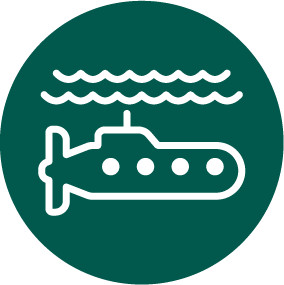
SUBMARINES
Submarine Atmosphere Monitoring
Take a closer look
CO monitoring with the COSAMS
Carbon monoxide can be generated aboard a submarine from both routine and emergency operations such as cooking, exhaust from diesel engines, the use of chlorate candles or even an onboard fire incident. In such an enclosed environment as a submarine, it is vital for the safety of all submariners onboard that accurate and continual monitoring of CO takes place. Anything else can result in deadly consequences.
Carbon Dioxide Sensor Unit
The GFC sensor targets the exact wavelength of carbon monoxide and when the gas is detected, the sensor sounds an alarm. Because the sensor is seeking a unique wavelength, potential for cross-sensitivity from other gases or water vapor is eliminated. The monitoring is done continuously in real-time using the unique GFC infrared sensor to provide constant protection should CO contamination occur. The COSAMS will also NOT register any ‘false positives’ or inadvertent alarms.
Technical Specification
Carbon monoxide poisoning
In 2003, a Chinese submarine was discovered drifting in the Bohai Sea. It is speculated that all 70 crew members perished due to carbon monoxide poisoning caused by diesel engine exhaust. That is just one example of what can happen without proper monitoring aboard submarine fleets.
Equipment aboard today’s modern submarine fleets is highly advanced. There is an obvious need for reliable and continuous CO monitoring throughout every vessel. Many CO monitoring devices utilize electrochemical sensors. While certainly adequate in most carbon monoxide monitoring situations, electrochemical sensors are susceptible to cross-contamination from other gases, mainly carbon dioxide and hydrogen.
Aboard submarines, the potential from cross sensitivity from hydrogen is extremely high. Hydrogen can be present on submarines due to the batteries being used on board. This “cross-sensitivity” can result in unacceptable false readings of CO.
To deal with this situation, completely unique to submarines, especially those with diesel engines, the engineering team at the Analox Group developed COSAMS, which is short for Carbon Monoxide (CO) Submarine Atmosphere Monitoring System. Easily one of the most precise and technically-advanced devices that Analox offers, COSAMS exists for one purpose and only one purpose – to keep submariners safe while protecting us.
Real time monitoring
The COSAMS unit offers continuous real-time monitoring CO. Two COSAMS units should be fitted in a submarine, one mounted to the fore, in the accommodation area, and the other aft, in the engine room. Each COSAMS indicates the local CO concentration on a color LCD and transmits a corresponding 4-20mA signal to the submarine’s Central Air Monitoring System. The COSAMS user interface permits calibration of the sensor and may be used to provide a local visual alarm, if desired.
Infra-red sensing
The submarine environment poses a number of problems to standard off the shelf CO sensors. The common electrochemical cell is extremely cross sensitive to hydrogen, making it unsuitable for use in a submarine environment, where hydrogen is constantly produced during charging of the submarine batteries, thus providing a constant background level. Most toxic gas electrochemical cells also
suffer the added limitation of being very sensitive to changes in pressure. When you add the operating environment into the equation, you need equipment that can operate across a range of temperatures and humidity levels as well as through pressure changes.
Analox understands the technology challenges associated with using IR sensing techniques over dynamic pressure ranges and are able to correct for these effects to produce accurate sensors. The COSAMS unit uses an infra-red sensor which uses a gas correlation filter to minimize cross sensitivity to interfering gases in the environment.
Gas samples
The COSAMS unit consists of a single enclosure which contains all sensors, pneumatic fittings and display components. The user interface and display are presented on the front face of the enclosure. The enclosure is intended to be wall mounted using suitable shock-proof mounts. A gas sample is drawn from the submarine atmosphere around the enclosure, using the internal sample pump. The gas sample is analyzed before being exhausted to the atmosphere.
The unit offers two adjustable audio and visual alarms, a 4 to 20mA output and up to 90 day’s continuous data logging. Maintenance and calibration is designed to be carried out on board and in the dockyard.
